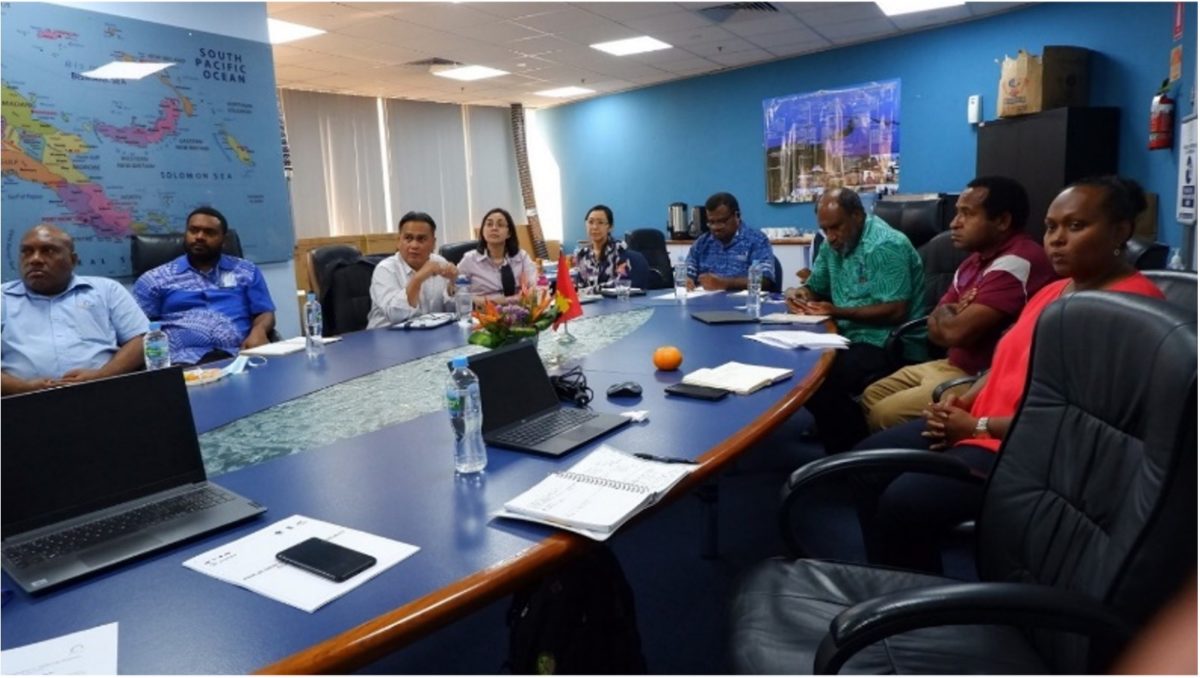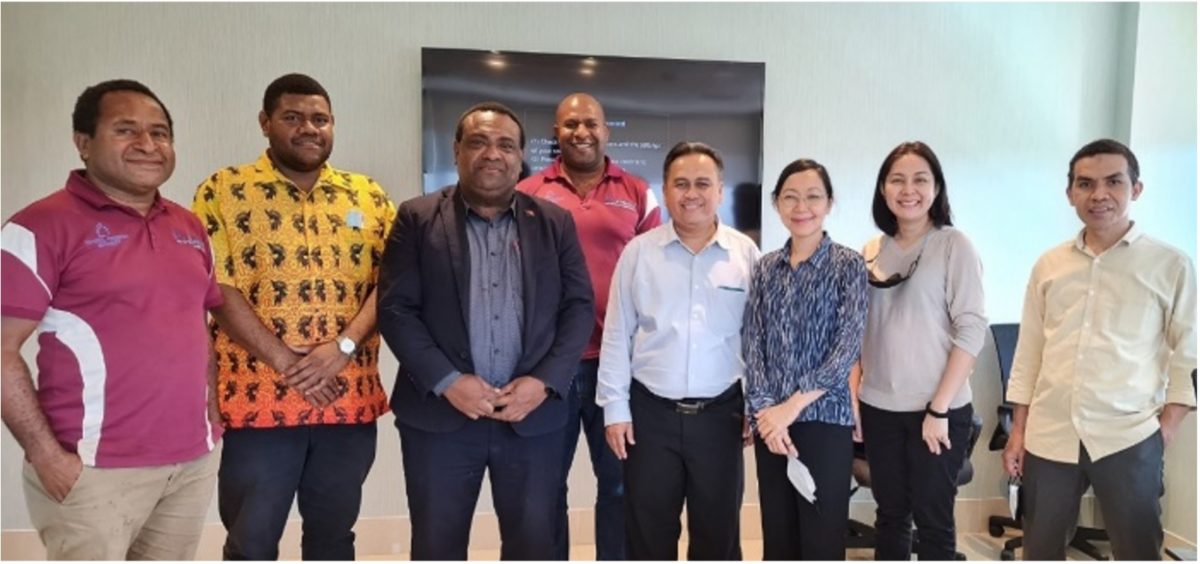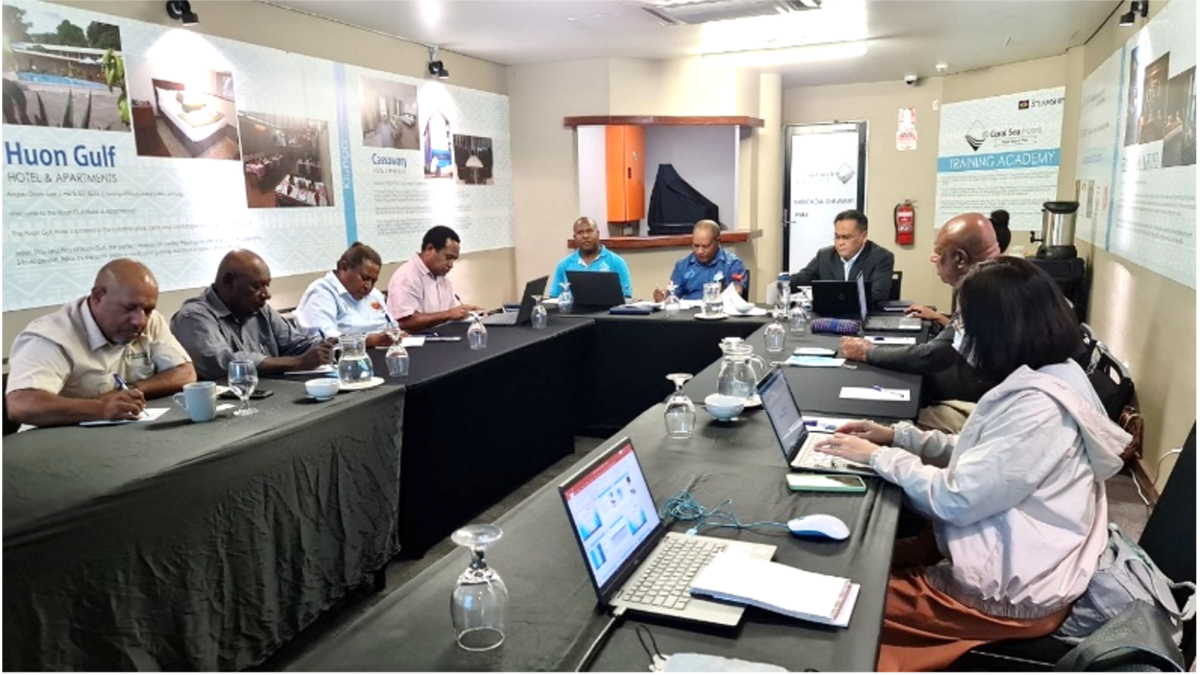Building on the foundational results from the first phase of the GEF-financed and UNDP-supported Arafura and Timor Seas Ecosystem Action (ATSEA) Programme, the second phase project, ATSEA-2, welcomed the formal participation of Papua New Guinea (PNG) in the process of developing a sustainable programme for the management and conservation of marine and coastal resources in the Arafura and Timor Seas (ATS) region.
Following the regional inception workshop for ATSEA-2 in November 2019, and establishment of project implementation mechanisms in PNG in 2020, the project went into full swing in the country in 2021; despite the challenges and restrictions arising from the COVID-19 pandemic, it delivered significant progress and accomplishments. These include the establishment of inter-agency and multi-sectoral coordination mechanisms for the ATSEA-2 with a view to supporting the Programme in the long-term; conducting key baseline policy, legal, institutional, biophysical and capacity assessments; preparation of a capacity development plan and Artisanal Fisheries Management Plan for South Fly District (the main project site in PNG); and participation of key stakeholders in various capacity building and regional consultations, assessments and planning, to establish a regional governance mechanism and address priority transboundary issues in the region, mostly through virtual platforms.
Through online participation in the meeting of ATSEA-2’s 3rd Regional Steering Committee (RSC) meeting, held in November 2021, the Government of PNG, through the National Fisheries Authority (NFA), also expressed interest in hosting the 4th RSC Meeting in November 2022.
Considering the above, it was only fitting for the ATSEA-2 Regional Project Management Unit (RPMU) to visit PNG immediately after COVID-19 travel restrictions were lifted, to meet key project stakeholders and partners and get a broader perspective of the development and implementation of the project in the country.


Led by Dr. Handoko Adi Susanto, ATSEA-2 Regional Project Manager, a four-person team from the RPMU travelled to Port Moresby, PNG from 21-26 June 2022; with the support of the National Coordinating Unit in PNG, they met and interacted with various project participants for the first time.
The first meeting on June 2022 was with the NFA, the National Focal Agency for the ATSEA-2 Project in PNG. Mr. Noan Pakop, Deputy Managing Director of NFA and ATSEA-2 National Project Director, along with key representatives from various units of the agency, welcomed the RPMU team and highlighted the importance of face-to-face meetings in providing a better understanding of projects and processes, as well as national perspectives and challenges. The meeting also identified ways to effectively collaborate and move forward.
On the same day, the team met with Mr. Edward Vrkic, Deputy Resident Representative; and Ms. Linda Kapus-Barae, Project Manager of UNDP-PNG, to discuss the co-financing commitment of UNDP-PNG to the ATSEA-2 Project and to explore areas of possible collaboration. The project team expressed appreciation to UNDP-PNG, particularly to Ms. Kapus-Barae, for their support and for providing inputs and insights during the National Project Board (NPB), National Inter-Ministerial Committee (NIMC) and Stakeholder Partnership Forum (SPF) meetings in PNG. They also expressed their hope that UNDP-PNG would continue their support and engagement with ATSEA-2.


The team was welcomed at the Australian High Commission (AHC) by Ms. Theresa Gizoria (a member of the Economic Team) and had an exchange of information on respective progress and initiatives, while also discussing possible opportunities for further collaboration – both in PNG and at the regional level. In line with the new Australian government’s strong commitment to actions related to climate change and the environment, the AHC expects to roll out more initiatives in PNG that are aligned with several ATSEA-2 targets related to agriculture including fisheries, livelihood and climate change.
The meeting was an opportunity to identify areas of joint action between AHC and ATSEA-2. Both agreed to exchange information on related studies and activities, and to coordinate closely for further discussions and possible joint programming. This included the ongoing review and refinement of an Artisanal Fisheries Management Plan for South Fly, updating the ATS TDA and the regional Strategic Action Program (SAP), developing PNG’s National Action Program (NAP) and ATSEA-2’s ongoing work planning for 2023. Ms. Gizoria also confirmed AHC’s interest in stronger collaborations with the NFA and their willingness to continue being part of ATSEA’s Stakeholders Partnership Forum in PNG.
The team then proceeded to pay a courtesy visit to the PNG Department of Foreign Affairs and Trade (DFAT) Immigration and Citizenship Authority (ICA), and were welcomed by Mr. Brian Kaumu, who is Director General of the Bilateral Division and Head of its Asia Branch. The team provided a short overview of the project and key initiatives (particularly in PNG) and zoomed in to ongoing efforts related to development of a regional governance mechanism for the ATS region.
Mr. Kaumu expressed his willingness to extend assistance to NFA and recognised ATSEA-2 as a regional initiative; key targets related to regional governance mechanisms will therefore require collaboration between various countries, along with DFAT representatives who are committed to linking ATSEA-2 with the multilateral/regional relations.


The last agenda on project team’s second day in PNG was a visit to the University of PNG to meet with Prof. Ralph Mana and Prof. Augustine Mungkaje, who is supporting the TDA updating process at the national level. The meeting focused on discussing the progress and the target timeline related to data gathering for the preparation of the country synthesis report, which will provide inputs to the updating of the regional TDA, as well as preparation for the meeting of the National Working Group (NWG) for the updating of TDA and SAP.
Responding to an invitation by the Indonesian Embassy in PNG, the team also had the opportunity to meet the Ambassador, Mr. Andriana Supandy, and the embassy officers and staff on 24 June. The courtesy visit enabled the team to provide information about ATSEA-2 and the work being done at the regional level and in PNG.
RPMU’s mission to PNG was by all accounts successful and fruitful, in terms of supporting key project activities, strengthening relationships and building new ones. The visit may have been long delayed due to the pandemic, but the adaptive management applied and optimisation of virtual platforms enabled the project to progress and keep step with the work plan and targets. In-person interactions and field visits remain critical to a wider appreciation of national and local contexts; perspectives and nuances not fully captured in brief and remote online meetings. The RPMU is already planning for the next visit.
(By Christine Ingrid Narcise)


